 |
|
|
| (Information by Peter Kessler, with additional information from Prophets and Prophecy in the Ancient Near East, Martti Nissinen, Robert Kriech Ritner, & Choon Leong Seow (Society of Biblical Literature, 2003), from Ancient Assyria, C H W Johns (Cambridge University Press, 2012), from The Persian Empire, J M Cook (1983), from The Histories, Herodotus (Penguin, 1996), from Arabians in Mesopotamia during the late-Assyrian, Chaldean, Achaemenian and Hellenistic Periods, R Zadok (ZDMG 131, 1981), from The Routledge Handbook of the Peoples and Places of Ancient Western Asia, Trevor Bryce, from Zur historischen Topographie von Persien. II. Die Wege durch die Persische Wüste, Wilhelm Tomaschek (1885), from Jewish War & Jewish Antiquities, Flavius Josephus, from Petra and the Lost Kingdom of the Nabataeans, Jane Taylor (2001), and from External Links: Encyclopaedia Iranica, and Livius.) |
|
|
| 979 - 748 BC |
The situation in [ Babylonia](MesopotamiaBabylon.htm#Kassite VIII) is extremely confused by this time, with various Kassite, Babylonian, and newly-arrived Chaldaean and Arabian groups vying for power, as well as some individuals who claim distant [Elamite](EasternElam.htm#Neo-Elamite Period) descent. Most of those who secure the throne achieve very little in the face of such a politically fragmented state. 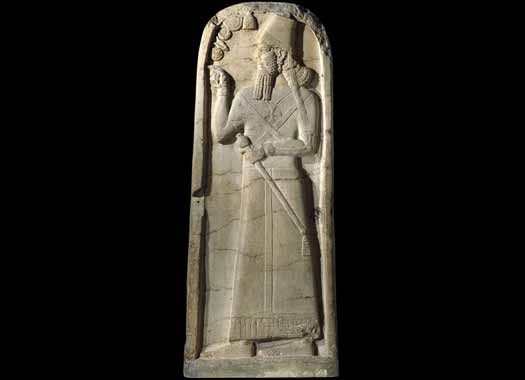 Babylon had mixed fortunes in its relations with Assyria, but in 823 BC it successfully supported Shamshi-Adad V's claim to the Assyrian throne Babylon had mixed fortunes in its relations with Assyria, but in 823 BC it successfully supported Shamshi-Adad V's claim to the Assyrian throne |
|
| 853 BC |
Ben-Hadad is a member of an alliance of states which also include Ammon, Arvad, Byblos, Edom, [ Egypt](../KingListsAfrica/EgyptAncient%5FThirdIntermediate.htm#22nd Dynasty), Hamath, Kedar, and Samaria (seemingly despite recent conflict between Damas and Samaria). Together they fight Shalmaneser III of Assyria at the Battle of Qarqar which consists of the largest known number of combatants in a single battle to date, and is the first historical mention of the Arabs from the southern deserts (specifically Kedarites).  Despite claims to the contrary, the Assyrians are defeated, since they do not press on to their nearest target, Hamath, and do not resume their attacks on Hamath and Damas for about six years (see feature link). Despite claims to the contrary, the Assyrians are defeated, since they do not press on to their nearest target, Hamath, and do not resume their attacks on Hamath and Damas for about six years (see feature link). 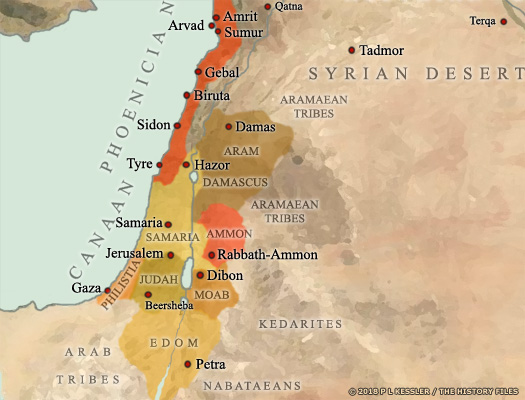 When the Neo-Assyrian empire threatened the various city states of southern Syria and Canaan around 853 BC, they united to protect their joint territory - successfully it seems, at least for a time (click or tap on map to view full sized) When the Neo-Assyrian empire threatened the various city states of southern Syria and Canaan around 853 BC, they united to protect their joint territory - successfully it seems, at least for a time (click or tap on map to view full sized) |
|
| c.850 BC |
Philistines sack Jerusalem in Judah alongside Arabs and Ethiopians, who loot King Jehoram's house and carry off all of his family except for his youngest son, Jehoahaz. |
|
| 722 - 710 BC |
Between 722-720 BC, Moab, Philistia, Judah, and Edom rebel against Assyrian overlordship. The rising is apparently put down, as the next record shows Moab paying tribute to King Sargon II, but still apparently being led by a native ruler rather than a newly-installed governor. Moabite troops are subsequently used in Assyrian wars against the Arab tribes. |
|
| 649 BC |
Shamash-shumi-ukin of [Babylon](MesopotamiaBabylon.htm#Splinter State) rebels against his brother in the Assyrian kingdom. Ashurbanipal soon besieges Babylon, bringing it back into the empire. Rebellions in support of Babylon by the Arabian Kedarites and Nabatu are also put down, possibly prior to Babylon's recapture. It takes two years of direct rule before a puppet ruler of Babylon is placed on the throne, while the son of the Nabatu chief, Natnu, is declared leader of their people (his father's fate is not recorded). 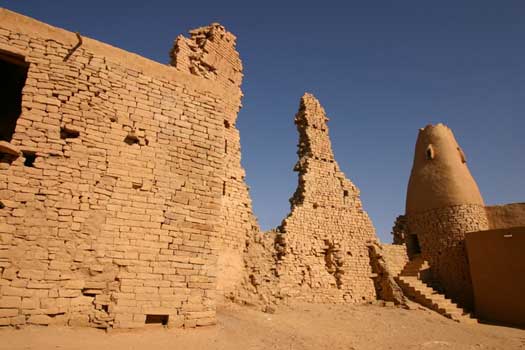 Adumattu, the ancient Akkadian name for modern Dumat al-Jandal, was the site of the Kedarite capital but today it lies in ruins Adumattu, the ancient Akkadian name for modern Dumat al-Jandal, was the site of the Kedarite capital but today it lies in ruins |
|
| 539 - 525 BC |
Nabonidus angers the Babylonians in 539 BC by trying to reintroduce Assyrian culture, including placing the moon god Sin above Babylon's Marduk in terms of importance. Perhaps because of that, resistance to Cyrus 'the Great' of Persia, when he enters Babylonia from the east, is limited to just one major battle, near the confluence of the Diyala and Tigris rivers. On 12/13 October (sources vary), Babylon is occupied by Cyrus, who adopts an enlightened approach to his subjects, and allows the captive Judeans to return home. Arabia seems to be forgotten for a time, until the Persians invade Egypt in 525 BC and the province of Arabāya is soon created. |
|
|
|
|
| Persian Satraps of Arabāya (Arabia) Ancient [ Egypt](../KingListsAfrica/EgyptAncient%5FLatePeriod.htm#27th Dynasty) was conquered by the Persian empire under Cambyses in 525 BC, subsequently being annexed as a great satrapy until 404 BC. This was not without a hiccup, as Cambyses was seemingly defeated by the now-rebel [ Twenty-Sixth](../KingListsAfrica/EgyptAncient%5FLatePeriod.htm#26th Dynasty) dynasty pharaoh, Psamtik III, who is theorised as enjoying a brief period of resurgence before finally being crushed by Darius I. The Achaemenid kings of Persia were subsequently acknowledged as pharaohs in this era, forming a twenty-seventh dynasty although, in their administrative terminology, it was an official satrapy or province. Arabia around the oasis of Taymāʾ, which had belonged to the Babylonian empire, was only attached to the Persian empire during Cambyses' Egyptian campaign. Administratively it was added to the great satrapy of [ Mudrāya](../KingListsAfrica/EgyptAncient%5FLatePeriod.htm#27th Dynasty) (Egypt). Between that and the earlier fall of Babylon to the Persians in 539 BC it was probably one of several regions which lay 'unclaimed' until the Persians could get around to it. However, due to a bond of friendship which was created in 525 BC, the Arabs did not actually enter any satrapy and were exempt from royal tribute (although individuals were counted as satraps of the region). Instead they brought the Persian kings a 'gift' of a thousand talents (around thirty tons) of frankincense a year. Herodotus also mentions an Arab camel corps amongst the various contingents which were levied for Xerxes' Greek expedition. These Arabs were armed with long bent-back bows. During the Achaemenid period the term Arabāya related only to the northern part of today's Saudi Arabia and neighbouring states. Herodotus located the Arabs in the region between the Mediterranean and the Red Sea, essentially along the coast from southern Palestine into northern Sinai. They also lived in the steppes of southern Mesopotamia. The central and southern areas were largely unknown territory. This use of Arabāya to designate a geographical rather than an administrative entity is paralleled in the term 'Aribi' ('Arabu, Arubu'), which appears in Assyrian royal inscriptions beginning in 853 BC. In the Old Testament the term 'Arab' designates inhabitants of the Syrian desert. In Babylonian economic and legal documents of the Achaemenid period some Arabs ('Arbāya') are referred to as residents of Babylon (having played a part in its history in the first millennium BC), along with Nippur, Sippar, Uruk, and other cities. The language which was being spoken by these Arabs is unknown, with the few preserved names (around twenty) not differing from Aramaic. |
|
|
 |
|
|
| (Information by Peter Kessler, with additional information from The Persian Empire, J M Cook (1983), from The Histories, Herodotus (Penguin, 1996), from Arabians in Mesopotamia during the late-Assyrian, Chaldean, Achaemenian and Hellenistic Periods, R Zadok (ZDMG 131, 1981), from The Routledge Handbook of the Peoples and Places of Ancient Western Asia, Trevor Bryce, from Zur historischen Topographie von Persien. II. Die Wege durch die Persische Wüste, Wilhelm Tomaschek (1885), and from External Links: Encyclopaedia Iranica, and Livius.) |
|
|
| 525 - 524 BC |
Psamtik III of [ Egypt](../KingListsAfrica/EgyptAncient%5FLatePeriod.htm#26th Dynasty) is defeated at the Battle of Pelusium and Egypt is conquered by the Persian empire under Cambyses. Egypt becomes a vassal state, with Persian troops being supplied with water by the Arabs during their journey into Sinai. Many Egyptian temples are destroyed, but Cambyses spares the Jewish Temple on Elephantine. However, it seems that Psamtik is not immediately captured. Instead he, or the bulk of his forces, seek refuge around the Dachla Oasis. Cambyses follows him with an army of fifty thousand men and, according to Herodotus, the entire army disappears in the desert, presumably overcome by a sand storm (around 524 BC). 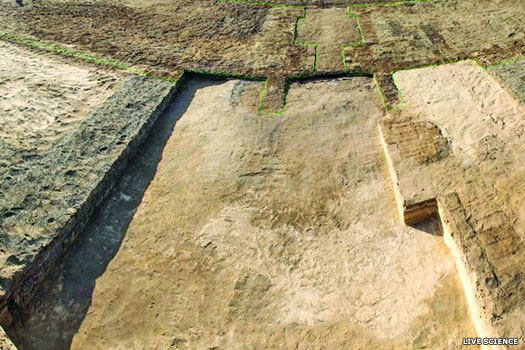 The remains of a fortress which was probably built by Pharaoh Psamtik to secure Egypt's north-eastern border (beyond or near Arabia's frontier) was uncovered in stages by archaeologists between 2008-2019 (click or tap on image to view full sized) The remains of a fortress which was probably built by Pharaoh Psamtik to secure Egypt's north-eastern border (beyond or near Arabia's frontier) was uncovered in stages by archaeologists between 2008-2019 (click or tap on image to view full sized) |
|
| A highly favourable modern theory is that this story is created by Cambyses' successor to mask an embarrassing defeat. In this theory, Psamtik manages to reconquer a large part of Egypt and is crowned pharaoh in the capital, Memphis. It is Cambyses' successor in Persia, Darius I, who ends the Egyptian 'revolt' with a good deal of bloodshed two years after Cambyses' defeat, in 522 BC (or 521 BC). Satraps are appointed to govern Egypt and, presumably, they hold sway over Arabāya too. |
|
|
| 346 BC |
In tandem with Satrap Mazaeus of Khilakku, Bēlsunu of Ebir-nāri and Phoenicia leads fresh contingents of Greek mercenaries to put down the revolt in the Levant (principally led by Sidon). The main attack falls on Sidon but both satraps are repulsed. The Persian king himself is forced to follow up with a more direct intervention. It would seem to be after this date that Bēlsunu is replaced by one Dernes. He may be of lesser rank because he isn't given Ebir-nāri, only Phoenicia, plus Arabāya. 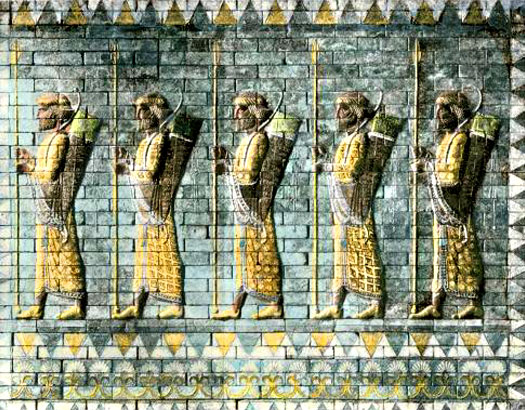 These archers of Darius' Royal Guard were on display in the Hall of Artaxerxes II, whose continued efforts to break a long-running rebellion against him involved attempts to re-invade Egypt These archers of Darius' Royal Guard were on display in the Hall of Artaxerxes II, whose continued efforts to break a long-running rebellion against him involved attempts to re-invade Egypt |
|
| mid-300s BC |
Dernes |
Satrap of Phoenicia & Arabāya. |
| ? - 333 BC |
Arsames |
Satrap of Athura, Ebir-nāri, Khilakku & Phoenicia. Killed. |
| 333 - 332 BC |
In 334 BC Alexander of [ Macedon](../KingListsEurope/GreeceMacedonia.htm#Great Kings) launches his campaign into the Persian empire by crossing the Dardanelles. Much of Anatolia falls by 333 BC and Arsames falls (whilst also officially satrap of Arabāya and leading Arabian and Ethiopian contingents). Alexander proceeds into Syria during 333-332 BC to receive the submission of Ebir-nāri, which also gains him Harran, Judah, and Phoenicia (principally Byblos and Sidon, with [Tyre](CanaanTyre.htm#Kings Restored) holding out until it can be taken by force). Athura, Gaza, and [ Egypt](../KingListsAfrica/EgyptAncient%5FLatePeriod.htm#31st Dynasty) also capitulate (not without a struggle in Gaza's case). Mazaeus of Athura initially plays his part by opposing Alexander, but he eventually surrenders, and Alexander makes him satrap of Mesopotamia. Arabāya (Arabia) seems to drift away from any centralised administration. It seems not to be included in Alexander's conquest of Egypt. Indeed, in 312 BC the most prominent Arab state, Nabataea, defeats an army from Argead Syria as it attempts to plunder Nabataean territory during the Wars of the Diadochi. The state turns into a fully recognised kingdom in the second century BC and survives until the second century AD. 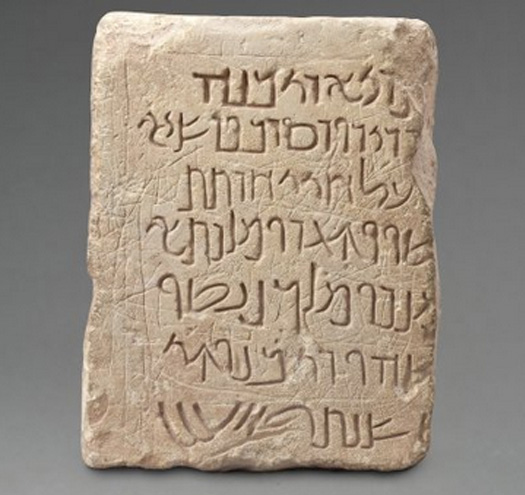 The cuneiform tablet records the existence of the Nabataeans, one of the few mentions of them as later records were largely paper/papyrus-based, written in Aramaic or Greek The cuneiform tablet records the existence of the Nabataeans, one of the few mentions of them as later records were largely paper/papyrus-based, written in Aramaic or Greek |
|
| 7th Century AD |
The Arab invasion of the seventh century AD destroys any remaining Nabataean identity, incorporating them into the new Islamic empire. In the eighth century the Abbasids under Abu Muslim begin an open revolt in the emirate of Khorasan against established Umayyad rule of the empire which changes the empire's face and moves its focus to Baghdad. In 909, thanks to the murder of the Aghlabid ruler of Ifriqiyya, Abdullah, and Ziyadat's massacring of his brothers and uncles, Ifriqiyya is conquered by the Fatimids. They also quickly conquer Morocco, Syria, Algeria, and Arabia, establishing holdings which oppose Baghdad until the latter's destruction by the Mongols in 1258. The Islamic empire is equally destroyed. Subsequent Arab holdings are either largely fragmentary or are controlled from Egypt. Frequent wars break out between territories and feuds are often continued for years, resulting in ongoing bloodshed. In the sixteenth century ultimate regional power is taken by the Ottomans in Anatolia, but factional fighting continues in outlying territories such as Arabia which has Mecca as one of its main focal points. 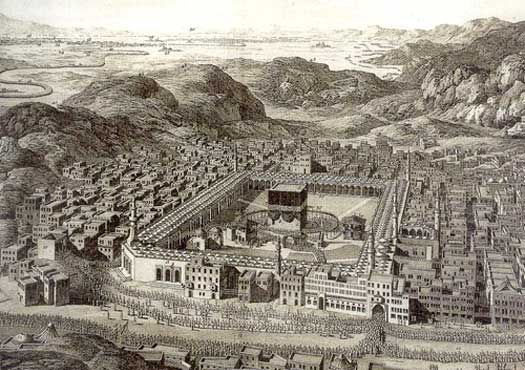 Mecca and the Great Mosque are shown here, also illustrating the long queues of pilgrims entering it in a scene which is repeated every year, even in the modern age Mecca and the Great Mosque are shown here, also illustrating the long queues of pilgrims entering it in a scene which is repeated every year, even in the modern age |
|
| By the start of the twentieth century and the conclusion of the First World War's disruptive regional influence, Arabia is largely part of Hashemite Transjordan. By that time, the focus for Arabia's independence is on the Saudi emirs of Riyadh. |
|
|
 |
|
|

 Babylon had mixed fortunes in its relations with Assyria, but in 823 BC it successfully supported Shamshi-Adad V's claim to the Assyrian throne
Babylon had mixed fortunes in its relations with Assyria, but in 823 BC it successfully supported Shamshi-Adad V's claim to the Assyrian throne Despite claims to the contrary, the Assyrians are defeated, since they do not press on to their nearest target, Hamath, and do not resume their attacks on Hamath and Damas for about six years (see feature link).
Despite claims to the contrary, the Assyrians are defeated, since they do not press on to their nearest target, Hamath, and do not resume their attacks on Hamath and Damas for about six years (see feature link).  When the Neo-Assyrian empire threatened the various city states of southern Syria and Canaan around 853 BC, they united to protect their joint territory - successfully it seems, at least for a time (click or tap on map to view full sized)
When the Neo-Assyrian empire threatened the various city states of southern Syria and Canaan around 853 BC, they united to protect their joint territory - successfully it seems, at least for a time (click or tap on map to view full sized) Adumattu, the ancient Akkadian name for modern Dumat al-Jandal, was the site of the Kedarite capital but today it lies in ruins
Adumattu, the ancient Akkadian name for modern Dumat al-Jandal, was the site of the Kedarite capital but today it lies in ruins
 The remains of a fortress which was probably built by Pharaoh Psamtik to secure Egypt's north-eastern border (beyond or near Arabia's frontier) was uncovered in stages by archaeologists between 2008-2019 (click or tap on image to view full sized)
The remains of a fortress which was probably built by Pharaoh Psamtik to secure Egypt's north-eastern border (beyond or near Arabia's frontier) was uncovered in stages by archaeologists between 2008-2019 (click or tap on image to view full sized) These archers of Darius' Royal Guard were on display in the Hall of Artaxerxes II, whose continued efforts to break a long-running rebellion against him involved attempts to re-invade Egypt
These archers of Darius' Royal Guard were on display in the Hall of Artaxerxes II, whose continued efforts to break a long-running rebellion against him involved attempts to re-invade Egypt The cuneiform tablet records the existence of the Nabataeans, one of the few mentions of them as later records were largely paper/papyrus-based, written in Aramaic or Greek
The cuneiform tablet records the existence of the Nabataeans, one of the few mentions of them as later records were largely paper/papyrus-based, written in Aramaic or Greek Mecca and the Great Mosque are shown here, also illustrating the long queues of pilgrims entering it in a scene which is repeated every year, even in the modern age
Mecca and the Great Mosque are shown here, also illustrating the long queues of pilgrims entering it in a scene which is repeated every year, even in the modern age